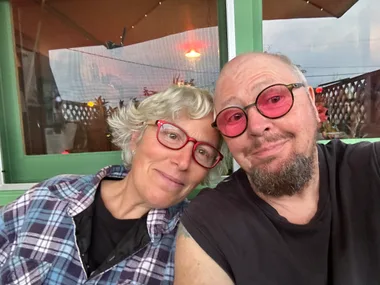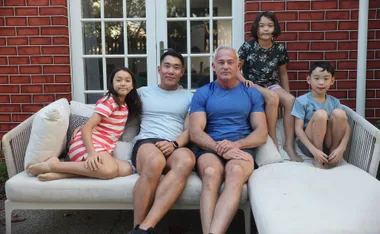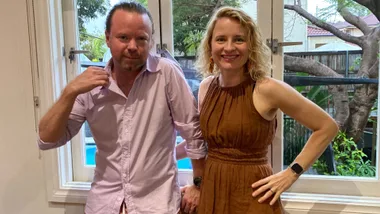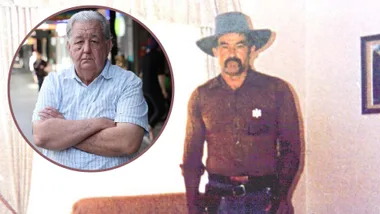I decided early on that I did not want to have a baby with the genetic disorder Fragile X. It’s not that I couldn’t love a child with a disability, I was just really honest with myself about how I wanted my life to be, and the lives I hoped my children would have.
As a Fragile X carrier myself I have a 50/50 chance of passing it on to my babies, and I did not want to have a daughter who was a carrier, or care for an affected son.
When I made that decision I was naïve about how this journey would affect my life forever.
My first pregnancy was in my early 20s. I fell pregnant naturally, and had my CVS testing done at 12 weeks. I was expecting a daughter and she was a non-carrier of the Fragile X gene so we went ahead with the pregnancy and welcomed our gorgeous daughter with no complications.
We didn’t know of any other way to go about the process in those days so when we decided to have a brother or sister for her 18-months-later we fell pregnant again naturally and hoped for the best.
I was wracked with terrible morning sickness 24 hours a day from the word go. We had the CVS tests at 11.5 weeks but the results in Queensland took a long time and further testing was required to get a conclusive result.
By the time my results came back showing I was having a girl and she was carrying Fragile X, I was 16 weeks pregnant.
I wondered if perhaps she would just be like me; a carrier but not affected, or if she would be like my sister who is mildly affected? Should I risk it? Should I carry this baby to term?
But in my heart I knew my decision not to carry on the gene was the right one for me, so I decided to terminate the pregnancy.
The late termination required a full 16-hour labour. Through my haze of contractions I was asked if I wanted to see the baby, or get a foot or hand print, but I just wanted it gone. I knew I couldn’t see the baby because it would break me wide open and I wanted to protect myself emotionally.
Even though I knew I was doing the right thing for me and my family, it was still very traumatic and it still hurts my heart to this day.
My brother is affected by Fragile X, as is my uncle, my cousin and so was my nephew. I found out I was a Fragile X carrier when I had a blood test at 12 and further testing before I married confirmed it once more.
The condition affects boys worse than girls, and it is rare that they can live an independent life. Usually the boys become completely affected, whereas girls are carriers although girls can be affected also. When a girl is affected by Fragile X it’s usually much milder than boys. She will often appear slow, but the boys are more obviously disabled.
Their speech is affected and they repeat themselves often and stutter. There is a level of autism, and developmental issues. They can’t drive a car, and holding down a job is difficult. Their lives are greatly affected. Boys with Fragile X are rarely independent when they become men.
After the first termination we took a break for a while, but when we heard about pre-implantation genetic diagnosis (PGD) IVF it seemed like the answer to our problems. I didn’t want to go through that again, and by testing the embryo before it was inside me we could alleviate the risk.
When we were ready, we began IVF. Just as we were about to retrieve my eggs I accidentally fell pregnant naturally. We went for testing at 12 weeks and this time it wasn’t until I was 18 weeks pregnant that a conclusive result came back and it was a boy.
A boy, who had Fragile X.
Deciding to terminate this pregnancy was more black and white this time. His genetic code told me the story that I needed to know to be certain I should not carry this child to term.
I didn’t acknowledge the grief I was consumed with. I knew I made this decision, and I still stood by it so I told myself to just get on with it. I pushed the sadness deep down and refused to look at it.
One day my absent mindedness nearly set the house almost burned my house down when I forgot there was oil on the stove. I knew then I needed help and I started seeing a therapist because I couldn’t understand why I felt so sad all of the time.
I accidentally fell pregnant once more when a condom broke and this time Sydney Fertility Clinic, who knew I’d been to hell and back already, vowed they would make this is easy as it could be for me and we’d rush the tests through. They wrapped me in their professional arms and did everything they could to ensure this journey was as smooth as easy as it could be from here.
My CVS was done as soon as possible, and the positive Fragile X result came back in time for me to have a standard curette termination at 12 weeks.
This time, I vowed I would not fall pregnant naturally again and we would test all of the embryos before they began growing inside me.
My first IVF cycle yielded no viable embryos. I was tired. I lost friends during the process and my sister accused me of playing God, but I really wanted another baby so I decided to have one final round before letting it go.
This round of IVF gave us two viable, non-carrier embryos. The female embryo was not dividing as well, nor as strong as the male, so without hesitation I asked them to put them both in. My husband nearly fell over when I called to tell him, but for me it was make or break time.
One of the embryos survived and nine months later I gave birth to a healthy son. I still hold an ocean of sadness for my experience but my children mean the world to me.
Fragile X syndrome is the leading inherited cause of intellectual disability and single gene cause of autism
About 1 in 3,600 boys and 1 in 4000-6000 girls are born with Fragile X syndrome
The impact of Fragile X syndrome varies but often includes intellectual and learning problems, delayed speech, anxiety, autism, low muscle tone, poor eye contact and a strong dislike of touch, loud noises and bright lights
Fragile X syndrome is caused by a change to one of the genes on the X chromosome. Both men and women can carry the changed gene and risk passing it onto one or more of their children
About 1 in 170 women and 1 in 800 men carry the Fragile X gene which, on top of the risk of having a child with Fragile X syndrome, also increases their risk of developing one of two conditions that affect adults who have the change to the gene. These conditions are FXPOI (which causes reduced fertility and/or early menopause) and FXTAS (a neurological condition a bit like Parkinson’s disease)
There are several reproductive choices that couples can consider once they know if Fragile X syndrome is anywhere in their families’ history. Testing for Fragile X syndrome is generally by a DNA blood test and if positive, genetic counselling is strongly recommended
As told to Danielle Colley.











